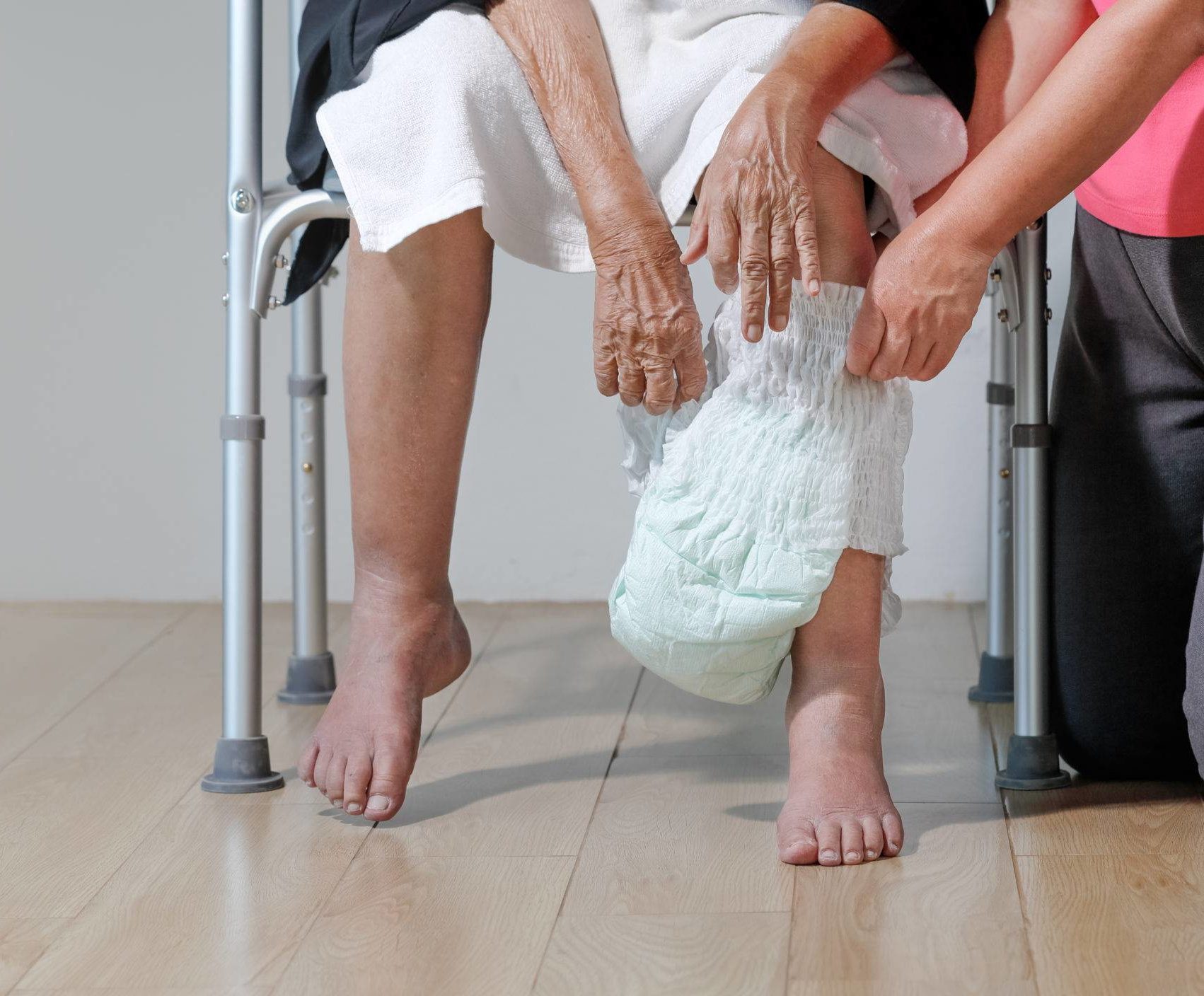When caring for a loved one, you may run into the often awkward situation of incontinence. Incontinence is the inability to control your body’s own urination and defecation processes and can be common in the elderly and disabled. Managing incontinence delicately will help your loved one stay healthy and infection-free while maintaining their quality of life. In this article, we’ll explain the five different types of incontinence and offer tips to manage adult diapers.
What are the Types of Incontinence?
As we mentioned, there are several different types of incontinence that we’ll explore now.
- Stress Incontinence. Stress incontinence is when the loss of bladder or rectal control spawns from pressure. This pressure can be caused by anything from laughing and crying to walking or sneezing.
- Urge Incontinence. Urge incontinence is when the need for the restroom only comes when the situation is extremely urgent. The feeling is a sudden and sharp twinge that usually causes leakage. This type is more common in the elderly.
- Overflow Incontinence. Overflow incontinence occurs after urination where the final bit is unable to flow freely and dribbles or expels itself later.
- Functional Incontinence. Functional incontinence is incontinence that occurs as the result of a physical or mental impairment (such as a stroke).
- Stool Incontinence. Stool incontinence occurs when someone is unable to control or stop themselves from defecating. It often results in stool leaks.
(Source)
How To Manage Adult Diapers
One of the most important aspects of managing adult diapers is to let your loved one hold onto their dignity. It’s crucial to ensure they’re comfortable and don’t feel like a burden to you, so a positive attitude is the foundation for all the remaining tips.
With that key component in mind, here are some tips for managing adult diapers:
- Change diapers frequently. To reduce the risk of infection, keep your care recipient clean and dry. The average patient needs between 5 and 8 changes per day according to AffordableMedical. Do frequent checks (especially if your loved one is immobile) to ensure it’s changed immediately after it’s soiled.
- Review the diaper size periodically. The size of the diaper matters. If your loved one looks to be uncomfortable, it’s worth checking that you’re using the proper size. If it’s too small and it will be tight, uncomfortable, and may restrict circulation. If it’s too big, there may be leaks.
- Movement is important. If your loved one is bed-ridden it’s important to keep them upright or moving (rotating) throughout the day to help prevent ulcers and keep the blood moving.
- Skin is fragile. As we age our skin gets thinner and more fragile. It’s important to be gentle when moving, changing, or wiping your loved one to prevent skin tears or cuts. You should also check for skin tears or redness each time you change a diaper so they can be properly treated (or so that barrier cream can be applied to prevent tears and sores).
- Talk to a doctor. If your loved one is bedridden or you’re afraid to cause injury by moving or changing your loved one, talk to a doctor about the best ways to maneuver. Each situation varies, so your loved one’s primary care physician or nurses should be able to provide a tutorial for changing and movement that best suits your situation.
Closing Thoughts
Managing adult diapers to handle incontinence is an uncomfortable but often necessary part of caregiving. There is no shame in this situation and it’s OK to ask for help if you need it. You are not alone.
The role of caregiver is always tough, but you’re part of a large, strong, and helpful community of people including and beyond your family who have been in your shoes. The California Caregiver Resource Centers were created with you both in mind and at heart to be a free resource as you navigate the challenging role you’re in. We would love to connect you with your local Center, which can talk more about local programs and support groups for caregivers, answer your questions, and explain how they can best support you.
Share this post: